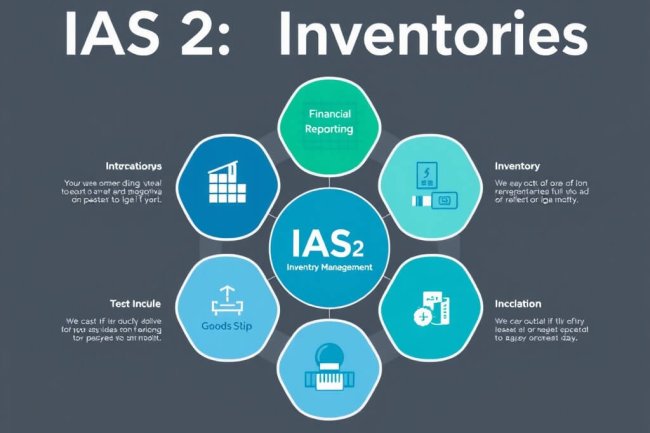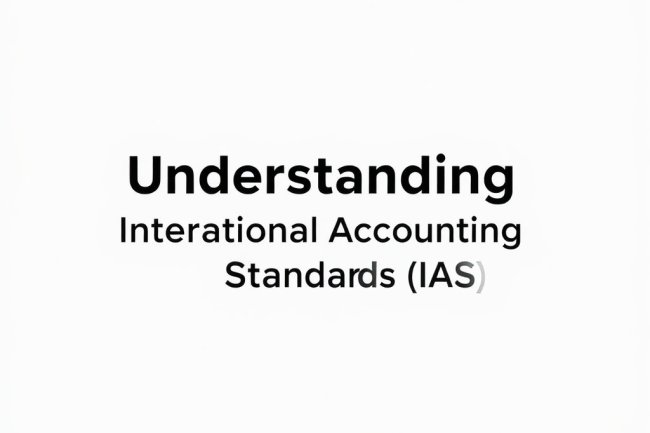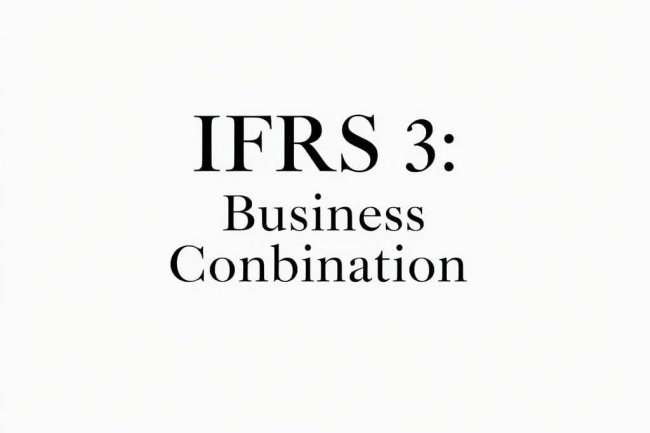Understanding IAS 1: A Comprehensive Guide to Financial Statement Presentation
Understanding IAS 1: A Comprehensive Guide to Financial Statement Presentation Discover the key principles of IAS 1 in our comprehensive guide. Learn about the requirements for presenting financial statements, including the framework, fair presentation, and important disclosures. Enhance your understanding of international accounting standards and improve your financial reporting practices.

Understanding IAS 1: Presentation of Financial Statements
Introduction
International Accounting Standard 1 (IAS 1) is a key standard set by the International Accounting Standards Board (IASB) that outlines the framework for preparing and presenting financial statements. Its primary objective is to ensure that financial statements provide a fair and comprehensive view of an entity's financial position, performance, and cash flows, making them useful for a wide range of stakeholders, including investors, creditors, and regulatory bodies.
Key Components of IAS 1
-
Complete Set of Financial Statements
A complete set includes:- Statement of Financial Position: This provides a snapshot of the entity’s assets, liabilities, and equity at a specific point in time.
- Statement of Profit or Loss and Other Comprehensive Income: This shows the entity’s financial performance over a specific period, detailing income and expenses.
- Statement of Changes in Equity: This outlines changes in equity from transactions with owners, such as dividends and share issues.
- Statement of Cash Flows: This presents the inflows and outflows of cash, categorized into operating, investing, and financing activities.
- Notes to the Financial Statements: These provide additional context and disclosures regarding the significant accounting policies and various components of the financial statements.
-
Fair Presentation and Compliance
- Financial statements must present a true and fair view of the company’s financial position.
- Compliance with IFRS is essential to maintain credibility and uniformity in financial reporting across different jurisdictions.
-
Going Concern
- IAS 1 assumes that an entity will continue its operations for the foreseeable future, typically considered as at least the next 12 months.
- If there are doubts regarding the entity's ability to continue as a going concern, this must be disclosed.
-
Accrual Basis of Accounting
- Financial statements should be prepared on an accrual basis, meaning that transactions are recorded when they are earned or incurred, not when cash is exchanged.
- This approach provides a more accurate reflection of the entity’s financial performance and position.
-
Consistency
- Entities should consistently apply the same accounting policies across periods unless a change is justified and disclosed.
- Consistency enhances comparability and reliability in financial reporting.
-
Materiality and Aggregation
- Material items must be presented separately in the financial statements to provide clarity.
- Immaterial items may be aggregated to avoid clutter and enhance readability.
-
Offsetting
- Offsetting of assets and liabilities, or income and expenses, is generally prohibited unless specifically allowed by IFRS.
- This ensures that users can get a clear view of the financial position without confusion.
-
Comparative Information
- IAS 1 requires entities to present comparative information for the previous period for all amounts reported in the current period.
- This allows users to analyze trends and changes over time.
-
Structure and Content
- IAS 1 prescribes the structure and content of financial statements, including the arrangement of headings, sub-headings, and specific disclosures.
- A well-structured financial statement enhances usability and understanding.
Importance of IAS 1
IAS 1 is crucial for promoting transparency and consistency in financial reporting. By adhering to these standards, entities can significantly enhance the reliability of their financial statements, thereby fostering trust among stakeholders. The clear presentation of financial information enables users to make informed economic decisions, assess risks, and evaluate management performance.
Example of IAS 1: Presentation of Financial Statements
International Accounting Standard 1 (IAS 1) outlines the overall requirements for financial statements, including their structure and the minimum content required. Here’s a simplified example to illustrate its application:
Example: Financial Statements of XYZ Corporation
XYZ Corporation
Statement of Financial Position
As of December 31, 2023

Key Components Explained:
- Title: Clearly states the name of the entity and the type of financial statement.
- Date: Indicates the period end date, which is essential for financial reporting.
- Assets and Liabilities: Classified into current and non-current categories to provide clarity.
- Equity Section: Shows the ownership interests, including share capital and retained earnings.
Compliance with IAS 1:
- Structure: The statement is presented in a structured format, enhancing readability.
- Consistency: The same accounting policies are applied consistently across periods.
- Comparative Information: While not shown here, IAS 1 requires the presentation of comparative information for prior periods.
This example demonstrates how IAS 1 guides the presentation of financial statements, ensuring they are clear, comparable, and informative for users.
The Generally Accepted Accounting Principles (GAAP) and the International Accounting Standards (IAS), particularly IAS 1, provide frameworks for financial reporting. Here are the key differences and similarities between the two:
Differences
-
Regulatory Framework:
- GAAP: Primarily used in the United States and governed by the Financial Accounting Standards Board (FASB).
- IAS 1: Part of the International Financial Reporting Standards (IFRS) set by the International Accounting Standards Board (IASB) and used internationally.
-
Presentation of Financial Statements:
- GAAP: Has specific formats for financial statements and may include more detailed disclosures for certain items.
- IAS 1: Offers more flexibility in the presentation, emphasizing a fair presentation and the relevance of the information provided.
-
Terminology:
- GAAP: Uses terms like "balance sheet," "income statement," and "statement of cash flows."
- IAS 1: Refers to these as "statement of financial position," "statement of profit or loss," and "statement of cash flows," respectively.
-
Measurement Bases:
- GAAP: Often requires historical cost measurement, with certain exceptions for fair value.
- IAS 1: Allows for both historical cost and fair value measurements, depending on the asset or liability.
-
Conceptual Framework:
- GAAP: Focuses on rules-based standards, requiring specific compliance with established guidelines.
- IAS 1: Based on principles, allowing for judgment in applying accounting policies and preparing financial statements.
Similarities
-
Objective of Financial Reporting:
- Both aim to provide information that is useful for decision-making by a variety of stakeholders, including investors, creditors, and regulators.
-
Core Financial Statements:
- Both frameworks require the preparation of key financial statements: a balance sheet (statement of financial position), income statement (statement of profit or loss), and cash flow statement.
-
Consistency and Comparability:
- Both emphasize the need for consistency in accounting policies and comparability between financial statements over time and across entities.
-
Disclosure Requirements:
- Both GAAP and IAS 1 require adequate disclosures to provide users with a clear understanding of the financial position and performance of the entity.
-
Accrual Basis of Accounting:
- Both frameworks require the use of the accrual basis of accounting, meaning that transactions are recorded when they occur rather than when cash is exchanged.
Conclusion
In conclusion, IAS 1 serves as the foundation for the presentation of financial statements, ensuring that they are informative, comparable, and consistent. Understanding and applying IAS 1 is fundamental for entities aiming to achieve high-quality financial reporting.
While GAAP and IAS 1 have distinct regulatory environments and approaches to financial reporting, they share common goals of transparency, consistency, and providing valuable information to users. Understanding these differences and similarities is crucial for companies operating internationally or transitioning between frameworks.













